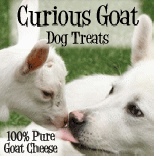
| So You REALLY Want an Alaskan Malamute? | |
|---|---|
|
The Alaskan malamute is a heavy-freighting dog of the Inuit people who inhabited the shores of Kotzebu Sound and excels as an adaptable, intelligent canine companion. A heavy-boned dog with a bulky muzzle, a broad head, wide-set ears, and a thickly furred tail carried plumelike over the back, the malamute is one of the most beautiful dogs on earth and, pound for pound, almost certainly the strongest. One of the many interesting features of the breed is the natural range in size, color, and markings. The average male weighs in at about 85 pounds and the average female about 75 pounds. Most malamutes are gray with white trim or black and white, but coats of silver, sable, red, and all white sometimes occur. Patterns of facial markings range from the all-white "open face" to the "full mask" – the combination of a black cap on the head, goggles around the eyes, and a bar down the muzzle. The breed is blessed with a sunny disposition and is happiest when treated as an intelligent partner. The Alaskan malamute works and lives with you, not for you. Sometimes aggressive toward other dogs, especially those of the same sex, the typical malamute is outrageously and almost universally friendly to humans. As the dogs of a peaceful, nomadic people, malamutes do not guard property and virtually always extend a tail-wagging, face-licking welcome to strangers. These dogs develop deep, complex attachments to their owners, but are not one-person dogs. Adult rescue malamutes readily bond with their adoptive owners. The versatile malamute is happy to pull a sled, but is equally glad to accompany the backpacker or casual walker. In cold weather, the malamute makes an ideal running partner. Large and powerful yet remarkably agile, malamutes sometimes enjoy retrieving (but not necessarily returning) tennis balls and frisbees. Some malamutes love to swim while others have a marked aversion to water. Most enjoy car rides and the breed is not prone to motion sickness. Virtually all malamutes find their greatest joy in human companionship and are perfectly content to join their owners in watching television. Malamutes take an alert interest in their surroundings and are excellent company. As an Artic dog, the malamute may live outdoors in a sturdy kennel with a high, strong fence, but malamutes also make splendid, almost odorless house dogs. Under no circumstances should a malamute be allowed to run loose or be kept on a chain, tie-out, or trolley. The indoor dog should have daily exercise on a leash or in a completely enclosed area such as a fenced yard. The outdoor dog has an equally strong need for daily companionship and affection. The ancestors of today's malamutes were sometimes forced to hunt, forage, and compete for food. Consequently, malamutes have a predatory streak and, if allowed to run loose in rural areas, will reliably slaughter livestock and wild animals. In urban and suburban areas, a loose malamute is a menace to cats. Swift, fearless, and powerful, malamutes have been known to catch birds on the wing and, if challenged, to deal harshly with other dogs. Some adult malamutes get along well with cats and other dogs, but some must go to homes with no other pets. Furthermore, although the breed boasts a few angels, some malamutes will raid trash and steal food inside the house. Anyone unprepared to deal firmly and calmly with this wild streak should not own an Alaskan malamute. The prospective adopter who has never owned a dog before should consider a sedate older malamute instead of a spunky young dog, as should anyone without the phyical strength to handle a vigorous youngster. Fortunately the Alaskan malamute has a life-span of about 10 to 12 years. Thus a 5 year old malamute has, on average, more years ahead of him than a 5 day old Irish wolfhound. Malamutes can bark but seldom do. The characteristic vocalization is a long series of woo-woo-woos, but malamutes also produce yips, growls, rumbles, and an immense variety of wwrrrs and other sounds not readily translated into English. Some malamutes never howl while others sound a spine-tingling reply to every passing fire engine, ambulance, and police car. The neglected malamute inappropriately chained in a back yard will loudly and indefatigably protest his situation, but happy malamutes are exceptionally quiet dogs. The breed's double coat consists of a short, dense undercoat and an outer coat of coarse guard hair. Malamutes shed profusely about twice a year but, except for those times, they require very little grooming. Some malamute owners bathe their dogs once a year, some, once a month. Some run a brush over the dog now and then, others groom the dog daily. A few malamutes have long coats called "woolies" which require more frequent grooming to prevent mats. Prospective adopters should bear in mind that even a carefully groomed, relatively short-coated malamute that is not actively shedding will nonetheless deposit some fur on carpets and in automobiles. This is not the breed for the fastidiously house-proud or car-proud. Want to know even more? The official Breed Standard as recognized by the AKC is located here. Or feel free to contact us with specific questions. Are you interested in the difference between the Alaskan Malamute and the Siberian Husky? The Minnesota Malamute Club has a comparison chart available for the two breeds. It is available here. |
|
Copyright © 2005-2026 Polaris Alaskan Malamute Rescue. All Rights Reserved.



